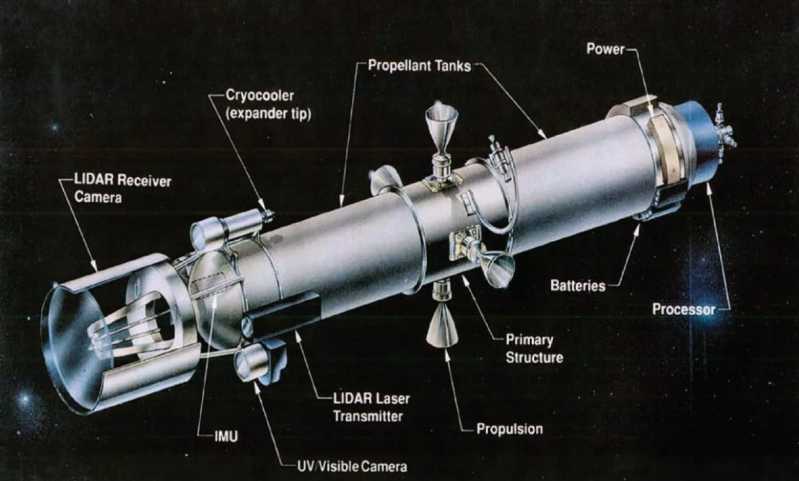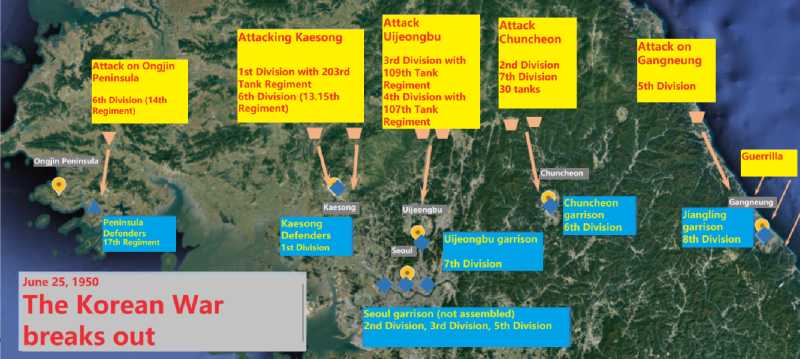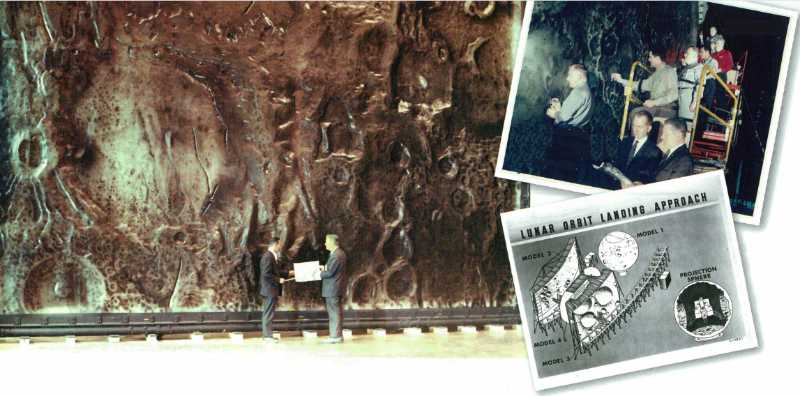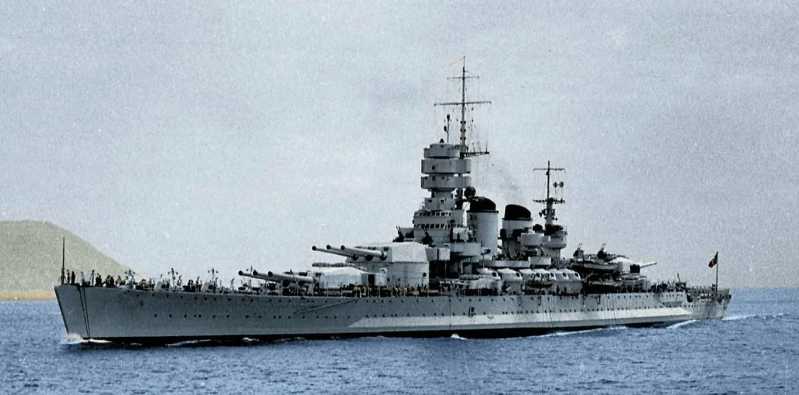"Brilliant Pebbles" defense system
After the implementation of the SDI program, although some important progress has been made in key technical fields such as detection technology, directed energy technology, kinetic interception technology, combat management, command, control, and communication (in theory), the development speed is far less optimistic than expected, and many problems are much more complicated than imagined. As time goes by, the SDI program has encountered many difficulties and resistance in technical, political, and economic issues. Therefore, the Ministry of Defense has adjusted and modified the SDI program almost every year, lowered the requirements step by step, and postponed the progress year by year, with the focus on continuous adjustment and change. No wonder even the Americans themselves sarcastically said that the only thing that has not changed in the SDI plan is that it "changes every year.
After three years of intensive research, Dr. Lawrence Livermore National Laboratory’s other physicist, Dr. Lawrence Wood, proposed in 1988 to develop a relatively low-cost new space-based defense system capable of launching kinetic interceptors. In April 1987, the Strategic Defense Program Agency described in its annual report submitted to Congress: Kinetic interceptor (KEW) technology is currently the most mature and cost-effective advanced technology for anti-intercontinental ballistic missiles (applicable to boost phase, post-boost, mid-stage and terminal) and anti-satellite. The focus is first on targeting Soviet intercontinental ballistic missiles, and second on intercepting Soviet military satellites. Moreover, anti-missile and anti-satellite systems are very advanced in terms of system construction and combat elements. It can be integrated in itself.
As early as the 1960s, the Missile Defense Technology Catalog compiled by the US Department of Defense’s Advanced Research Projects Agency explained the principles behind future kinetic interceptors (missiles). The technical work of kinetic interceptors is mainly focused on projectiles launched by space-based space rockets, ground-launched endo-atmospheric and exo-atmospheric interceptors, micro-projectiles that can be launched from land and space, tactical ballistic missile interceptors, and tests of the above systems. Several "technical evaluation experiments" of such weapons programs have been very successful. In the Flexible Lightweight Agile Guidance Experiment (FLAGE), a small missile with a millimeter-wave radar seeker and multiple boosters was tested and hit three times. In a test conducted at the end of 1986, it successfully destroyed a flying missile flying at a speed of more than 4,830 kilometers per hour. Simulated re-entry warheads were carried out. Two or three FLAGE experiments were also conducted at the end of 1987 to verify the mastery of the guidance and control technology of short-range interceptors to deal with low-altitude targets with complex radar characteristics.
In the initial plan, the space-based kinetic interceptor (SBKKV) system consists of multiple groups of interceptors, which are installed in orbital modules. Each module is provided with combat management by booster phase monitoring and tracking satellites. A single space-based kinetic interceptor (SBKKV) combines monitoring and interception functions. The space-based kinetic interceptor (SBKKV) is sent to the predetermined orbit using existing launch vehicles and facilities, forming a constellation network in the space orbit, which can detect, identify, track and intercept space targets including ballistic missiles, re-entry vehicles or anti-satellite missiles. In the ground system Under the instruction of the system operator, the dormant SBKKV can be activated to release the interceptor to the target, which will directly hit and destroy the target at high speed.
In the test, two groups of space-based kinetic interceptors (SBKKV) were sent into low-Earth orbit by ground-launched Delta launch vehicles. After independent maneuvering and changing orbits, the shells and thruster plumes of the targets (mainly ballistic missiles) were detected using infrared and ultraviolet detectors. In the test, one group of interceptors impacted the other group after receiving the order, and both were blown up at the same time. The test showed that moving targets can be hit and destroyed by kinetic interceptors located in space orbit, and further promoted the US Air Force’s research on ultraviolet detectors, which have advantages over infrared detectors in terms of the volume size of their optical and cryogenic equipment. Part of the results achieved in the Delta launch vehicle test later became the technical source of the US Army’s KE-ASAT land-based anti-satellite missile interception system, and served as the basis for the space test of the Space-Based Kinetic Kill Vehicle (SBKKV). The SBKKV space test plan was carried out at the end of 1987 after a series of simulation tests and component ground tests.
As early as the winter of 1986, James Allen Sen Abrahamson, director of the Strategic Defense Initiative Agency, and Secretary of Defense Weinberger stated that the SDI program had developed to the point where the strategic defense system was incorporated into the defense acquisition process. At that time, the conceptual demonstration phase of the SDI strategic defense program had come to an end. In the summer of 1987, the Strategic Defense Initiative Agency submitted the newly revised SDI Strategic Defense Initiative program framework to the Defense Acquisition Board (DAB) for review.
On August 5, 1987, the U.S. Defense Acquisition Committee selected the three major components of the SBKKV system (propulsion surveillance and tracking system, space surveillance and tracking system, and kinetic interceptor) for demonstration and verification at the Los Angeles Air Force Base. The system officially became the first phase of the SDI Strategic Defense Initiative. As the overall concept of the system evolved, these three components were affected to varying degrees and changed. On September 17 of the same year, Secretary of Defense Weinberger approved the demonstration and verification of six technical elements in the first phase of the plan. The Space-Based Kinetic Interceptor (SBKKV) system was originally like a large constellation, with each orbital module in the constellation equipped with 10 independent killing flight interceptors. It was planned to deploy about three hundred Space-Based Kinetic Interceptors (SBKKV) in the low-Earth orbit around the earth. In the subsequent test evaluation, the technical characteristics of the space-based kinetic interceptor (SBKKV) have undergone major changes, mainly reflected in:
Reduce the size of the SBKKV missile body and carrier to reduce the probability of detection and tracking;
Cancel the fire protection system that occupies the internal space;
Delete some redundant BM/C3 functions from the carrier;
Reduce some of the SBKKV’s ground control facilities and network systems.
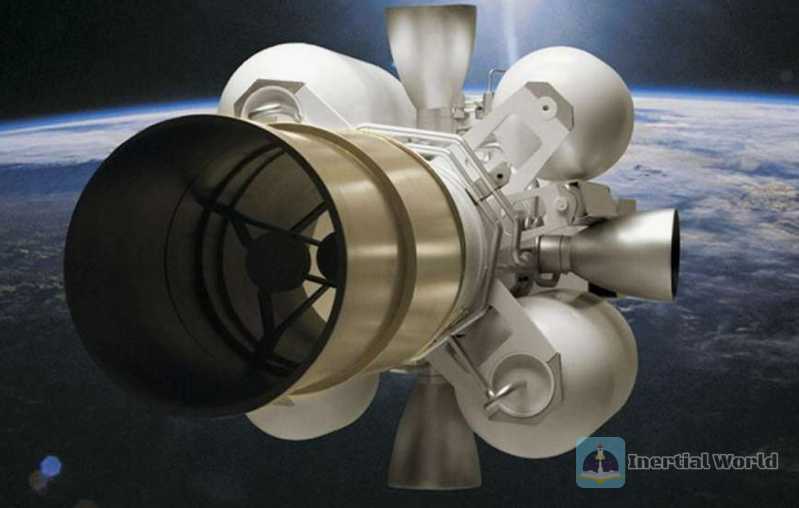
The main reasons for the major changes come from two aspects:
First, the unit cost of the original SBKKV plan is too high, and the weight and volume are large. The target features in the space orbit are obvious and can be easily detected and tracked by the Soviet space surveillance radar. In addition, the Soviet Union has begun to deploy and build a new generation of space surveillance systems - the "Canopy" radar optoelectronic identification complex and the "Window" optoelectronic complex, which have made new leaps in the detection and tracking capabilities of space targets. After completion, the new system will guide anti-satellite weapons to attack SBKKV. The interceptor of SBKKV itself has no protection measures against attacks by fixed-energy weapons such as lasers and particle beams, and is also extremely vulnerable to attacks and damage by Soviet co-orbital anti-satellite interceptors with proximity fragments and scattered steel balls, thus losing its combat effectiveness. With only 300 SBKKVs in orbit, it is not only difficult to effectively intercept Soviet intercontinental ballistic missiles that have an advantage in both quantity and performance, but it is also difficult to withstand a large number of cheap and practical Soviet anti-satellite weapons attacks.
Second, the first phase of the system cost stipulated by the Pentagon in October 1988 was US$69.1 billion, which included the space-based kinetic interceptor (SBKKV) system at that time. Based on the original system, Dr. Lawrence Wood proposed a new system, "Brilliant Pebbles", which is low-cost, can be deployed in large quantities, and has advanced and reliable performance after three years of intensive research and demonstration. In terms of cost, according to estimates, the deployment of the first phase of the "Brilliant Pebbles" defense system may cost $25 billion, of which $10 billion is used for development and deployment, $11 billion is used to establish a surveillance and early warning satellite system, and another $4 billion is used to build a ground control and command center.
The implementation of the "Brilliant Pebbles" plan, due to its small size (the missile body is about 1 meter long, equivalent to the size of a thermos bottle) and light weight (45 kilograms when fully fueled), is deployed in low-Earth orbit like a wide net. As a target to be attacked by the enemy, it has only a small radar cross-section, which is not easy to capture and detect. It is also very easy to create fake "Brilliant Pebbles" as bait to confuse the enemy, so its survivability is much stronger than the original SBKKV plan. The low cost is mainly because "Brilliant Pebbles" uses ready-made technology, which is very easy to mass-produce and has a very low cost. It is estimated that each "Brilliant Pebbles" costs only a dozen dollars. If the enemy uses anti-satellite weapons to attack one or two "Brilliant Pebbles", it will not have any effect and the cost is not worth it.
“Intelligent” In Lawrence Wood’s new plan, “Brilliant Pebbles” is a small, highly autonomous kinetic interceptor missile that integrates target monitoring and tracking, fire control and delivery. It does not need to rely on the boost phase surveillance and tracking satellite (BSTS) to provide combat management. It is a truly intelligent combat system that can fire and forget. Of course, the boost phase surveillance and tracking satellite (BSTS) can enhance the over-the-horizon sensitivity of “Brilliant Pebbles”. The “Brilliant Pebbles” plan was recognized by James Allen Sen Abrahamson, Director of the Strategic Defense Program of the Department of Defense, and was reported to the new US President Bush. Bush approved the new “Brilliant Pebbles” space-based kinetic interceptor missile plan and sought to increase investment in the overall SDI Strategic Defense Initiative. The space-based “Brilliant Pebbles” interceptor missile is scheduled to begin preliminary engineering development in fiscal year 1991 and conduct the first interception flight test. It is used for “Brilliant Pebbles”. The research funding for "Brilliant Pebbles" increased from $129 million in fiscal year 1990 to $329 million in fiscal year 1991, becoming the project with the largest increase in SDI program funding in fiscal year 1991. This shows the important position of the "Brilliant Pebbles" space-based kinetic interceptor in the strategic defense system structure plan to be deployed in the first phase.
In the revised second-phase system structure plan of the SDI Strategic Defense Initiative, the space-based "Brilliant Pebbles" interceptor will serve as the first layer of defense, with the main goal of implementing defense against the boost phase and boost terminal of enemy strategic missiles. The deployment of the "Brilliant Pebbles" interceptor is to deploy up to 5,000 interceptors in a space orbit 462.5 kilometers from the earth by a disposable launch vehicle, of which up to 1,000 interceptors will be deployed over the Soviet Union. According to the simulation test of the Lawrence Livermore Institute, if the deployment is in place, the entire "Brilliant Pebbles" interceptor will be deployed in the space orbit 462.5 kilometers from the earth. The "Pebbles" system can withstand and intercept more than 2,000 Soviet strategic missile attacks.
Although the CIA had clearly pointed out when collecting and providing information on the corresponding Soviet technologies and measures for the implementation of the SDI Strategic Defense Initiative that the cost of the Soviet Union in countering the construction of the US space-based strategic defense system was very low, and the effectiveness of the countermeasures was also obvious, intelligence showed that the Soviet Union had adopted a series of effective technologies and methods to improve the penetration performance of land-based ballistic missiles, including shortening the boost phase, rotating missiles, reducing the detection characteristics of warheads, true and false missiles, penetration devices, and making missile defense sensors ineffective. Most of them use proven technologies, do not require any technological breakthroughs, and have relatively low costs. At the same time, it reminds the top leaders of the United States and the Strategic Defense Program Agency that if the Soviet Union maintains its core competitiveness-continue to strengthen land-based large-scale intercontinental missiles and anti-satellite systems, it may cause the space-based strategic defense system that the United States has spent a lot of energy and money to build to be in danger in an instant, and the investment will depreciate. However, judging from the subsequent actions of senior US government leaders and staff to increase the total investment in the SDI Strategic Defense Initiative program and their public statements, the space-based strategic defense system, including "Brilliant Pebbles", is still highly anticipated and has high confidence.
"Brilliant Pebbles" is also required to have strong anti-satellite capabilities, not only in low-Earth orbit, but also in synchronous orbit, semi-synchronous orbit and large elliptical orbit to form a series of blockade interception lines to intercept enemy satellites. It can also be used to effectively suppress the increasing number of Soviet anti-satellite interceptors, space-based space mines and missiles, and protect the military satellites in orbit.
According to some reports and materials released by the US side, the "Intelligent Pebbles" system is mainly composed of the following four parts:
Wide-field, multi-spectral, high-resolution sensors are used to monitor, capture and track targets, and are the "eyes" of "Brilliant Pebbles". Each "Brilliant Pebbles" interceptor will be equipped with a small, high-resolution, wide-field video imaging system for autonomous detection, tracking and identification of targets. The system works in visible light, infrared spectrum and ultraviolet spectrum. The model exhibited at the Livermore Laboratory shows a seeker head with a diameter of about 15 cm, curved optical devices and a focal plane array. The outside world speculates that this may be the real-time video imaging system on the interceptor missile.
(II) The microcomputer on the missile identifies the target, calculates the target position, and generates control instructions based on the target data obtained by the sensor. It is the "brain" of "Brilliant Pebbles". Each "Brilliant Pebbles" is equipped with a microcomputer with the performance level of a Cray-1 supercomputer. Taking the interception of enemy ballistic missiles as an example, as soon as the ballistic missile leaves the launch silo, it can be detected by "Brilliant Pebbles". The microcomputer on the missile can perform 1 billion operations in 1 second, calculate the speed and trajectory of the incoming missile, and determine the interception program to complete autonomous operations without the help of other detection systems. The microcomputer itself is powered by a high-energy-density battery and charged by solar panels. The United States’ advanced microelectronics, computer and precision manufacturing technology can assemble a microcomputer weighing 100 grams and the size of a playing card box. The CD memory that matches the computer has a storage capacity of megabits and weighs only about 110 grams. The stored data can be modified.
(III) The propulsion system, which consists of two sets of small re-startable thrust rockets and propellant storage tanks, works according to the instructions of the "brain", allowing the "Brilliant Pebbles" interceptor to either maneuver sideways or fly directly forward. It is the "legs" of the "Brilliant Pebbles". The two sets of thrust rockets of Brilliant Pebbles are located in the middle and the lower end respectively, and they play two roles: one is to keep the position of Brilliant Pebbles in orbit; the other is to enable Brilliant Pebbles to quickly perform orbital maneuvers and intercept targets. It is said that with the help of this re-startable propulsion system and the precise guidance device on the missile, even if Brilliant Pebbles flies in low orbit for a long time, the fuel required to maintain the orbit unchanged is enough to keep Brilliant Pebbles in orbit for 10 years. (IV) Multi-purpose communication system, used to maintain communication transmission with the ground command center or other Brilliant Pebbles, is the "ear" and "mouth" of Brilliant Pebbles. Each Brilliant Pebbles will be equipped with a dual-channel laser imaging radar to track and identify targets in real time and at close range, and maintain communication with the ground command center and nearby Brilliant Pebbles through the radar. Regarding the application of radar, when Brilliant Pebbles After the sensor of "Brilliant Pebbles" determines the position of the target, it uses the laser radar to conduct homing, illuminates the target with the laser radar, and automatically informs the friendly "Brilliant Pebbles" that the illuminated target is under attack, thereby ensuring that only one "Brilliant Pebbles" is used to intercept each target, reducing combat costs and improving economic efficiency.
In addition, to ensure that "Brilliant Pebbles" can accurately locate themselves at any time, each "Brilliant Pebbles" is equipped with a real-time starlight navigation system. The system consists of a mature and proven real-time starlight navigation component and a miniature standard angular rate accelerometer and linear accelerometer, and is assisted by a high-precision timer. The navigation system uses the optical sensor on the "Smart Stone" to aim at the designated star.
"Brilliant Pebbles" The "Pebbles" space-based defense system adopts the idea of combining existing technology with technology under research. In terms of system maturity and overall reliability, it is a great progress compared to the stage of pursuing the application of advanced technology at the beginning of the Strategic Defense Initiative. Even from the perspective of the aerospace defense thought and technology reserves that are still in the hot research and demonstration today, "Smart Stone" is still a very advanced space-based defense system. In terms of combat deployment, it is also very practical to give full play to the effectiveness of the system. If we look at it from the perspective of "space-based boost phase missile defense" - doing so can not only destroy the incoming target as soon as possible (because the missile body and the warhead have not yet separated at this time, the ballistic missile is more vulnerable to attack in the propulsion or boost phase than in any subsequent part of its trajectory. At the same time, it is also easier to be detected), and the boost phase shutdown point of the intercontinental ballistic missile is usually 300~400 kilometers, and the orbital altitude of spacecraft (including satellites) is generally above 300 kilometers. Deploying "Smart Stone" at a suitable orbital altitude near this area is conducive to the implementation of the missile’s boost phase interception, and can also intercept most low-orbit satellites.
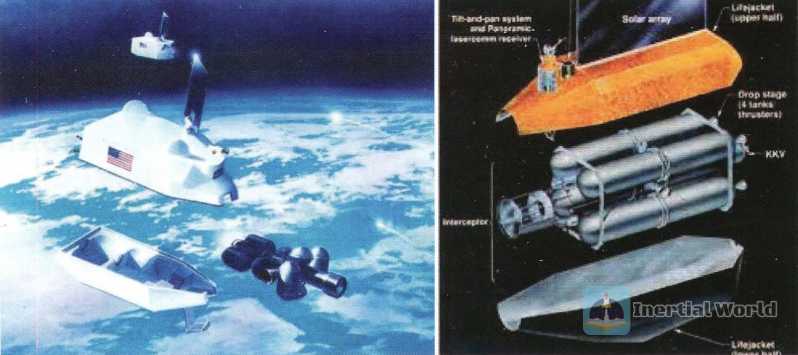
On February 9, 1989, James Allen Sen Abrahamson, director of the Strategic Defense Program, suggested in a letter to then-acting Secretary of Defense Taft that if it was decided to adopt "Brilliant Pebbles", 4,000 to 6,000 space-based "smart stones" would be deployed in the first phase. They would be distributed in several relatively low earth orbits, with the distance between each "smart stone" being 250 to 300 kilometers. Considering that the "Smart Stone" is also likely to be attacked and destroyed by Soviet anti-satellite missiles, co-orbital anti-satellite interceptors and laser anti-satellite irradiation while in orbit, it is strongly recommended in the later stage of the program to install each "Brilliant Pebbles" interceptor on a carrier called a "life jacket", which can also be understood as a protective device for the interceptor. The life jacket device mainly plays three roles:
Provide space environment control and protection for "Brilliant Pebbles", and provide anti-electromagnetic radiation and thermal protection;
Protect "Brilliant Pebbles" from damage caused by ground-based and space-based lasers, and at the same time, can partially resist nuclear explosions and electromagnetic pulse attacks;
Use the solar panels on the "life jacket" to provide "Brilliant Pebbles" with more durable and reliable power. When the supporting early warning and surveillance satellite sends out an alarm message, according to the combat instructions issued by the ground command center, "Brilliant Pebbles" will take off its "life jacket" and autonomously intercept incoming missiles or approaching satellites.
In the technical feasibility demonstration of attacking Soviet satellites, Livermore Laboratory, based on the initial position of "Brilliant Pebbles", the position of the target satellite (i.e. the interception position), and the speed increment of the "Brilliant Pebbles" interceptor missile when attacking the target (as conceived according to the interception requirements of the boost phase ballistic missile), found through a series of tests such as computer simulation and ground collision that the speed increment provided by the rocket engine on the interceptor missile during the orbit change determines the coverage range of the "Brilliant Pebbles" interceptor missile to the target satellite (taking high-orbit satellites as an example), and has trial-produced and improved missile engines that are suitable for frequent orbit changes. In general, the interception orbit of "Brilliant Pebbles" is hyperbolic, and the greater the orbit change speed, the stronger the interception capability. The greater the speed increment during the orbit change, the greater the coverage range.
The rest is to continuously optimize the attack and interception plan of "Brilliant Pebbles" according to actual combat needs. Through further experiments, the attack effect comparison at different angular distances in the same interception plane and the attack effect at different interception planes at the same angular distance were calculated. Due to space limitations, a large amount of data cannot be listed here. Only the final conclusion is explained, and the optimization problem of the "Smart Stone" attack plan is solved, focusing on two core points: on the one hand, in order to prevent the attack time from being too long, thereby increasing the error, the angular distance between the target and the "Brilliant Pebbles" should not be too large; on the other hand, even within the coverage area, the angular distance cannot be too small, because this will cause more of the orbit change energy to be used to change direction, thereby making the flight time longer and the interception speed lower.

"Brilliant As a space-based weapon system with dual attributes of anti-missile and anti-satellite, the "Brilliant Pebbles" space-based interceptor must first ensure that it can survive the large-scale attack of the Soviet Union before it can play its value and role in the hypothetical future war. In addition to adopting mature or under-development reinforcement technologies to deal with laser, nuclear and radio frequency weapons, only one method of improving survivability cannot deal with all threats. The "Brilliant Pebbles" space-based interceptor needs to use several technologies in parallel to survive the Soviet attack, including making the interceptor system have counterattack capabilities and reinforcing system components.
Under the coordination of the Strategic Defense Program Agency, several research and development units participated in this research. The most powerful of them is Sandia National Laboratories, which proposed an optional guarantee for the "Brilliant Pebbles" space-based interceptor. The six solutions for the survivability of "Brilliant Pebbles" and detectors are generally:
Increase the number of deployments and use redundancy to increase the chance of survival;
Avoid the attack of non-directed energy weapons through high maneuverability and take protective measures to ensure that the system’s own electrical and electronic systems are not damaged by factors such as radiation; intercept or counterattack to destroy the incoming device;
Enhance the survivability of the platform and system after being attacked through reinforcement; use false targets;
Disguise and cover the platform and system.
The method of blindly increasing the number of deployments was rejected in the subsequent review of the plan, which will increase the overall combat cost of the system. Developing mobile avoidance and counterattack capabilities is a feasible solution. "Brilliant Pebbles" and detectors mainly rely on the last five of the six survivability solutions, and directly destroy the opponent’s anti-satellite interceptors and anti-satellite missiles when necessary.
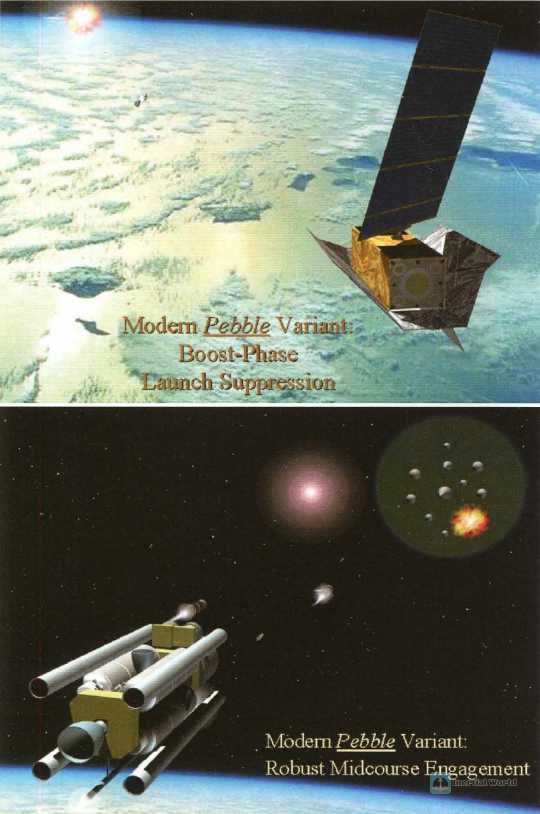
There is another significant problem that needs to be addressed and solved, which is how to improve the situational awareness of space targets by the "Brilliant Pebbles" system. In addition to the booster surveillance and tracking satellite (BSTS), the ground part of the space surveillance system also determines the true combat effectiveness of the entire system. Whether it is a defensive confrontation or an active confrontation, the ground part of the space surveillance system performs the function of space target monitoring and detects, marks, distinguishes, tracks and classifies high-value space targets. They are AN/FPS-85 large long-range phased array radar (the main radar of the US space surveillance network, delivered and put into use in 1969), TRADEX long-range tracking target identification radar (originally part of the US Defense Advanced Research Projects Agency’s Defender program, used to track and identify missiles and satellites, put into use in 1963), Altay ALTAIR long-range monopulse target identification radar (the largest missile tracking radar in the United States, put into service in 1973, used for target research when ballistic missiles re-enter the dense atmosphere), and "Haystack" radar (installed and put into use in 1964, used for satellite orbit measurement, deep space communications and radio astronomy research).

At that time, the United States also equipped and mobilized the Electro-Optical Deep Space Surveillance (EODSS) system and multi-target real-time space tracking system distributed around the world, with a detection distance of 36,000 kilometers, but the time interval for repeated monitoring of the same space target is generally at least 5 days. This is obviously unacceptable for "Brilliant Pebbles", which is extremely particular about immediate response and interception and killing of space targets. In addition, the compatibility and seamless connection between the existing ground surveillance system and the new system must be fully considered, and finally a powerful and real-time integrated space surveillance system with strong earth-ground characteristics must be built. This requires time to accumulate and continuously improve. In order to improve the monitoring, tracking and identification capabilities of all space targets and enhance the real-time battlefield perception capabilities of space-based interceptor platforms and systems, the United States launched the Space-Based Space Surveillance System (SBSS) as a supporting system project for space-based anti-missile and anti-satellite to support the ground surveillance system. The visible light sensor satellite constellation can improve the space situational awareness capabilities of detecting and tracking targets in Earth orbit. It can observe synchronous orbit satellites, as well as low-orbit satellites and debris, regardless of daytime and any weather conditions, and is equipped with command, control, communication and computer equipment. SBSS can fully monitor key space targets once a day and update their location information. The tracking capability and positioning accuracy of satellites, especially the global space surveillance of smaller targets in a shorter time, will be greatly improved. It will take until 2001 to achieve all this, and by then, the Soviet Union, the strongest opponent in the Cold War, has already collapsed.
It is really regrettable that the US side did not disclose the test process and final test results of "Brilliant Pebbles" in the public information. "Brilliant Pebbles" was eventually cancelled by the Clinton administration in 1993 due to the end of the Cold War and the collapse of the Soviet Union, but its fate was better than that of its predecessors in anti-satellite technology! The cutting-edge concepts and technical experience of space-based anti-missile and anti-satellite technology that were accumulated during the development and testing of "Brilliant Pebbles" can be seen in the relevant demonstration and development of the US National Missile Defense Program (NMD) and Theater Missile Defense Program (TMD) in the post-Cold War era, and it still shines brightly.
Real breakthroughs
As components of SDI, the Homing Experiment (HOE) and Exoatmospheric Reentry Interceptor Subsystem (ERIS) programs were not so concerned by the outside world. Perhaps at that time, the US government, for the sake of technical confidentiality, only announced to the outside world some fashionable concepts and shocking theories that were easy to be widely spread by the media. It was through HOE and ERIS that the United States truly explored a space interception and killing mechanism that was different from the two traditional mainstreams of proximity fragmentation and nuclear explosion, and successfully applied it to the subsequent National Missile Defense Program (NMD) and Ground-based Midcourse Defense Program (GMD), becoming the main core technology in the field of anti-missile and anti-satellite defense in the United States. The superposition homing test (HOE) conducted in 1984 - testing the direct impact of metal objects to kill the incoming ballistic missile warhead - also verified the impact and destruction of nearby enemy satellites and anti-satellite interceptors/missiles. However, the terminal guidance accuracy at that time could not reach the "average" radius R=D/2 of the enemy’s ballistic missile warhead (which is required by the kinetic kill device KKV). Therefore, it was required to increase the impact radius of the interceptor missile warhead and adopt an umbrella skeleton structure. After unfolding, the diameter D is 4.75 meters. It is required that each umbrella skeleton rib can generate a large kinetic energy to hit and destroy the target. This umbrella-shaped kill device can be called HOE KKV, and its mass is about 1200 kilograms.
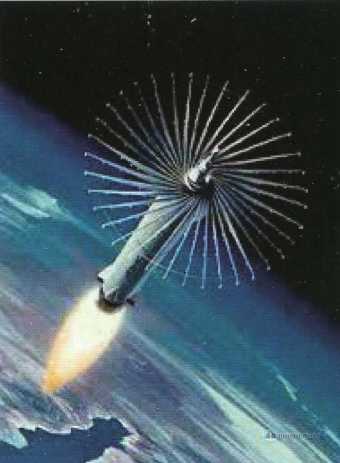
HOEKKV requires that the terminal guidance error should be less than D/2. HOE uses two-stage terminal guidance: the last stage rocket of the interceptor missile is equipped with infrared terminal guidance, and the umbrella-shaped kill device is also equipped with infrared terminal guidance. In the terminal guidance stage, the last stage rocket of the interceptor missile is first used for terminal guidance. When the interceptor missile warhead (umbrella-shaped kill device) is separated from the last stage of the interceptor missile, the multiple umbrella-shaped ribs of the warhead are unfolded. At this time, the infrared terminal guidance on the warhead is used to approach the target and kill the target. The superposition homing test was carried out four times, and the last test was successful. The miss amount of terminal guidance (error from the center of the target) can be less than the "average" radius of the target.
The Exoatmospheric Reentry Interceptor Subsystem (ERIS) program is the successor program of HOE. It is the ERIS KKV part of SDI’s ground-based interceptor for long-range ballistic missile defense. The ground-based interceptor uses the second and third stage boosters of the remaining Minuteman I ballistic missile. ERIS KKV uses an inflatable octagonal enhanced kill vehicle. Compared with HOEKKV, the weight and size of ERISKKV are greatly reduced. The ground-based interceptor with ERIS KKV is called ERIS ground-based interceptor or ERIS missile or simply ERIS. ERIS is planned to conduct 4 intercept flight tests. The first ERIS intercept flight test was conducted on January 28, 1991, and the intercept flight test successfully intercepted the target. ERIS KKV destroyed the target at an altitude of 270 kilometers, and the closing speed of ERIS KKV and the target reached 13.4 kilometers per second. Next, on March 13, 1992, the first ERIS intercept flight test was conducted, during which ERISKKV did not hit the target. After inspection, the seeker reported that the identification of real and fake warheads was correct. The reason for not hitting the real warhead was that the target detection and identification was half a beat late (this was the requirement for the pre-planned test), resulting in ERISK not having enough time to maneuver to the interception point on time. Finally, the ERIS test plan determined that this test was completely successful. Later, due to the end of the Cold War and major changes in the world situation, the remaining two ERIS intercept flight tests were cancelled.

Interception and killing mechanism, especially the innovative breakthroughs in terminal guidance accuracy and true and false target identification, made the original need to deploy more interceptors/missiles to compensate for the misses when killing targets completely a thing of the past. In terms of combat cost, relatively fewer interceptors/missiles can be used to achieve the same purpose. The United States has truly exerted its technological advantages in this regard, and used this advantage to accumulate to form an "asymmetric" against its opponents.
The superposition homing test and the Exoatmospheric Reentry Interceptor Subsystem (ERIS) program also created the backbone of the US military’s ground-based mid-course defense after the Cold War-the "GBI Ground-Based Interceptor Missile". GBI is a long-range (thousands of kilometers) high-altitude (more than 200 kilometers) ground-based silo-launched interceptor missile, composed of the booster of the Minuteman II, Minuteman III intercontinental ballistic missile or the OSC Lite three-stage booster rocket of Orbital Technologies and the exoatmospheric kill vehicle (EKV) designed by Raytheon. At present, there are two GBI launch sites in the United States, located at Vandenberg Air Force Base in California and Fort Greely in Alaska.
GBI has two mission attributes: intercepting incoming ballistic missile warheads at an altitude of more than 100 kilometers outside the earth’s atmosphere and destroying them by collision and kill; and performing attack missions on low-orbit satellites. GBI’s anti-satellite combat capability is mainly reflected in its detection range and attack speed. GBI can detect targets at a range of hundreds of kilometers. The detector on the interceptor can detect the light and heat radiated by the warhead in mid-course flight, so it is also suitable for detecting satellites. Its detection distance is affected by many factors, such as the temperature of the warhead or satellite and its surface characteristics. In the GBI test disclosed by the US, the detection distance of the detector on the GBI missile has reached hundreds of kilometers. The shutdown speed of GBI is 7~8 kilometers per second. The maximum flight speed of an intercontinental ballistic missile is about 7 kilometers per second, while satellites in low earth orbit generally fly at a speed of 7.3~7.8 kilometers per second. When GBI is launched vertically, the booster rocket sends the EKV to an orbit entry point at an altitude of about 6,000 kilometers. This altitude can cover low-orbit satellites with orbit altitudes generally below 1,200 kilometers, but cannot reach a semi-synchronous orbit of 20,000 kilometers or a geosynchronous orbit of 36,000 kilometers. Then the EKV seeker is turned on and begins to capture the target. The onboard computer performs orbit calculations to obtain a predetermined attack point and determine an attack orbit. The EKV flies directly to the predetermined attack point along the attack orbit and intercepts and kills the target at the predetermined attack point. When using GBI to attack low-orbit satellites, the interceptor missile can use its own speed to fly thousands of kilometers horizontally. Although it is deployed and launched from a fixed position, it can still attack most low-orbit satellites, especially satellites passing over the launch position.

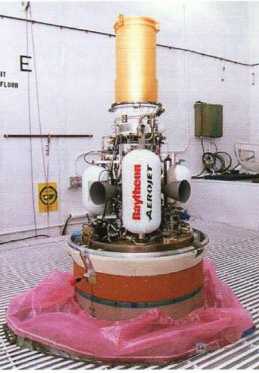
In the late Cold War, while also promoting the SDI plan, the United States clearly realized the vulnerability and susceptibility of its own space assets to attack and destructiveness. The space satellite systems that grew and expanded in the early and middle stages of the Cold War, which were technologically advanced and multifunctional, but extremely complex and costly, may be degraded, damaged and destroyed when faced with the enemy’s large-scale, cheap and practical anti-satellite weapon systems, and become useless in an instant. The US military, which once relied heavily on the huge, advanced and multifunctional space satellite system, will suddenly be blinded and embarrassed, groping in the dark and fighting against the opponent.


Since the 1980s, the United States has launched a new generation of national defense military satellite development program represented by "Milstar", focusing on improving electronic countermeasures and anti-interference capabilities, enhancing the ability to maneuver and evade when encountering anti-satellite weapons attacks, setting up stealth backup satellites to replace damaged satellites, strengthening the ability to resist nuclear explosion electromagnetic pulse damage, using time division multiple access or hybrid multiple access technology, introducing intersatellite link de-relaying and regenerative processing transponder technology, etc. as the focus of satellite technology development. It was from this moment that a series of new concepts and technologies aimed at improving the survivability and self-protection capabilities of US military satellites and space assets emerged and emerged.

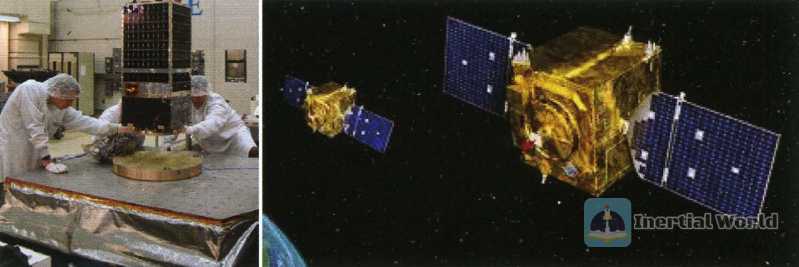
By using a large number of ready-made commercial satellite components and technologies to combine and manufacture a large number of economical and cheap military satellites, commercial satellites can also serve as military satellites when necessary to perform tactical communications, reconnaissance and photography tasks. Miniaturization and miniaturization of military satellites, splitting large satellite systems with complex technologies and comprehensive functions can quickly form a network, and a constellation composed of a large number of small satellites can provide performance comparable to or even higher than that of a single large satellite at a lower cost. Establish an autonomous distributed satellite group and network, transform satellites from "single-core" to "multi-core". Even if they are interfered with or killed by the enemy, the whole will not be affected by the damage of several important nodes as in the past. Set up fake satellites or hide substitute satellites to confuse the enemy’s sabotage and attack decisions. Strengthen the satellite’s orbit transfer and instantaneous maneuvering evasion capabilities. Satellites destroyed by the enemy can be replenished in time through rapid and low-cost launches on the ground or in the air, and links and networks can be quickly rebuilt... Starting with satellites, the target that the opponent cares about most, making the most concerned target elusive will make the opponent really nervous.
Use a cheap and practical route to continuously increase the cost of the opponent’s deployment and use of anti-satellite weapons, increase the uncertainty of the opponent before launching sabotage and attacking satellites, and increase its risks. For the United States, doing so will last longer than relying solely on developing its own anti-satellite capabilities to counterbalance the opponent’s anti-satellite capabilities.


